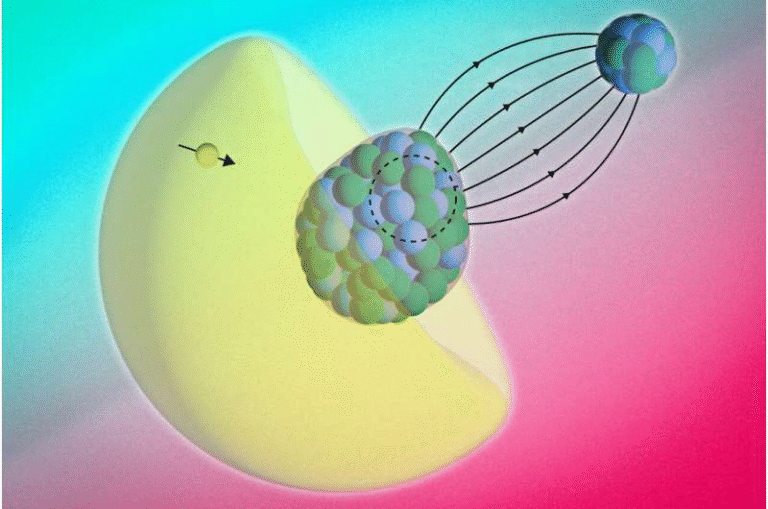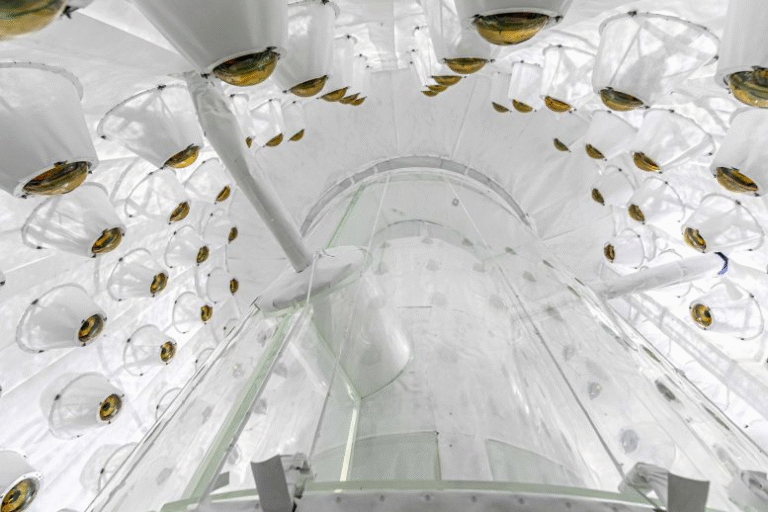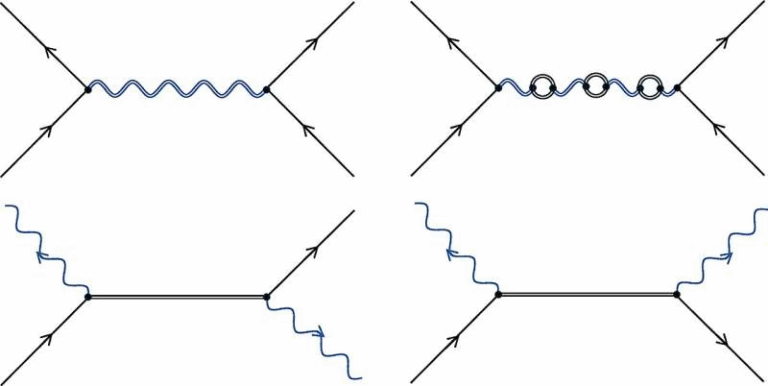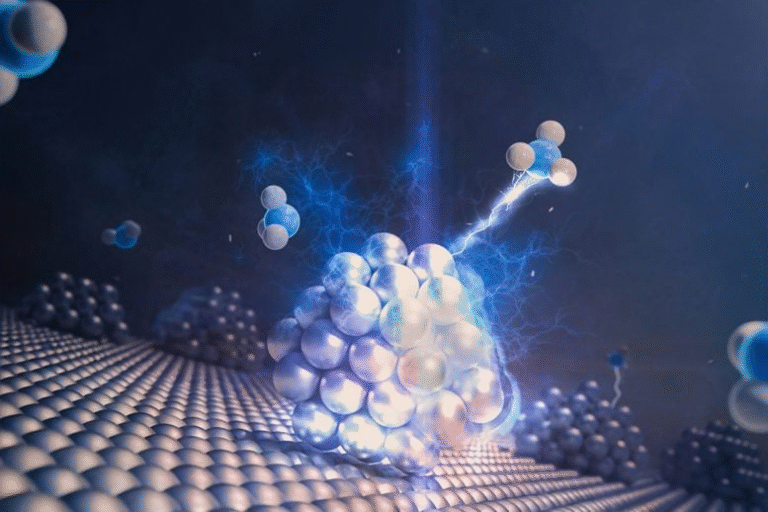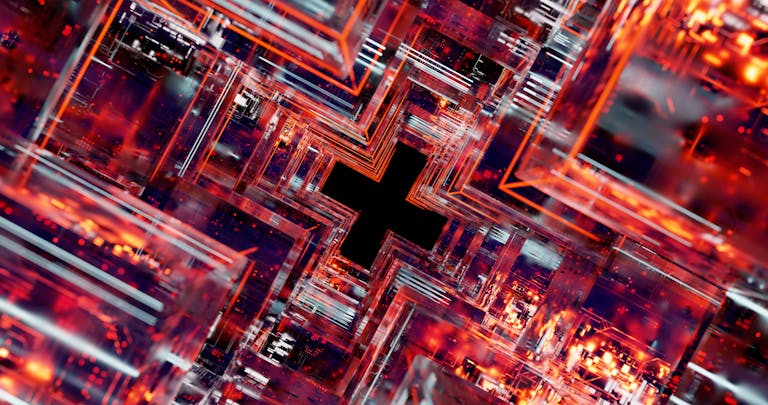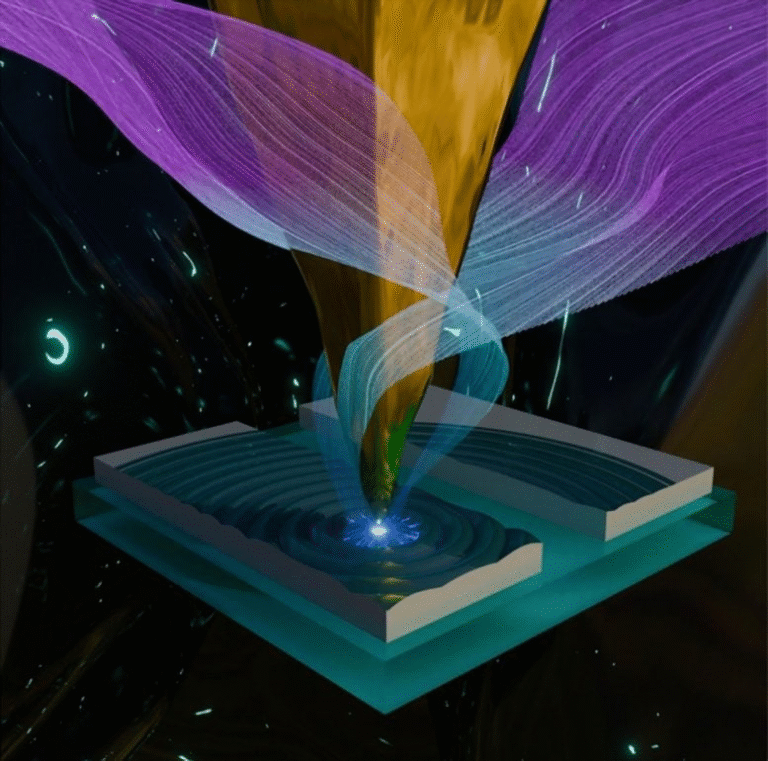Simulations Reveal New Strongly Correlated States of Matter in Ultracold Polar Molecules

Physicists have taken another big step in understanding ultracold polar molecules, hinting at the possibility of entirely new states of matter that could soon be observed in the lab. A team of researchers from TU Wien (Vienna University of Technology) and the Vienna Center for Quantum Science and Technology has performed large-scale simulations showing that polar molecules, when cooled to near absolute zero, might organize themselves into self-bound quantum structures—even without any external trapping forces.
This research, recently published in Physical Review Letters (2025), dives deep into the world of strongly correlated quantum systems, where the usual rules that describe atomic gases start to break down. The team’s simulations suggest that ultracold polar molecules can naturally form self-bound droplets, superfluid membranes, and even crystalline monolayers, all of which could exist under realistic laboratory conditions.
Understanding Ultracold Polar Molecules
To grasp why this discovery is so important, it helps to start with Bose–Einstein condensates (BECs). These are unique states of matter that appear when atoms or molecules are cooled to temperatures just a fraction of a degree above absolute zero (0 K). At these extreme conditions, individual particles lose their distinct identities and merge into a single quantum entity that behaves as one.
BECs are not new—physicists first created them using atoms in 1995—but making BECs from molecules has been a major challenge. Molecules are more complex than atoms because they have internal rotational and vibrational modes that complicate cooling and control. In 2023, researchers at Columbia University finally succeeded in creating a BEC of ultracold molecules for the first time, marking a huge milestone in the field.
Building on that progress, the TU Wien team decided to explore what happens when these molecular systems are allowed to evolve freely—without being held in place by light or magnetic fields. That led them to ask a simple but profound question: Can polar molecules naturally hold themselves together to form new types of matter?
What Makes Polar Molecules Special
Polar molecules differ from atoms in one crucial way: they have a permanent electric dipole moment. That means each molecule has one end that is slightly positive and another that is slightly negative, much like a tiny magnet, but driven by electric rather than magnetic charge. This feature allows them to interact over much longer distances than atoms can.
In atomic systems, dipole moments are usually magnetic and quite weak. In molecular systems, the electric dipoles are much stronger, and they can be tuned using electric or microwave fields. This tunability makes polar molecules a powerful tool for exploring quantum many-body physics, where interactions between particles determine the system’s overall behavior.
Because of their strong dipolar interactions, ultracold polar molecules are predicted to form exotic quantum phases such as self-bound droplets, supersolids, and quantum crystals. However, modeling and predicting their behavior is extremely difficult—traditional mean-field approaches, which work well for atoms, fail for systems this strongly correlated.
The Computational Challenge
To overcome these limitations, the researchers—Matteo Ciardi, Kasper Rønning Pedersen, Tim Langen, and Thomas Pohl—used an advanced numerical technique known as Path Integral Monte Carlo (PIMC). This method allows physicists to simulate quantum systems at ultralow temperatures with remarkable accuracy, taking into account the full complexity of particle correlations.
PIMC is computationally demanding. Each simulation can take several days and requires powerful high-performance computing resources. Fortunately, molecular BECs typically contain around 500 to 1,500 particles, a manageable number compared to the hundreds of thousands of particles found in typical atomic BECs. This made it feasible for the team to simulate realistic molecular systems under conditions achievable in current laboratories.
Through these heavy simulations, the researchers mapped out how dipolar molecules behave as their interaction strengths are varied. They discovered that even without external confinement, the molecules can spontaneously form self-bound states—clusters of molecules that stick together purely due to their mutual dipolar attraction.
From Droplets to Membranes to Crystals
The study revealed a sequence of quantum phases that emerge as interaction strength increases. At moderate interactions, the molecules form quantum droplets—tiny clusters that behave like superfluid helium, flowing without friction.
When the interaction becomes stronger, these droplets flatten into superfluid membranes—two-dimensional layers that remain frictionless and coherent. Pushing the interaction even further transforms the membrane into a crystalline monolayer, where the molecules lock into an ordered lattice structure while still remaining bound without any external trap.
This phase evolution—from droplet to membrane to crystal—is remarkable because it happens spontaneously, driven solely by interactions between the molecules. It shows that ultracold polar molecules can self-organize into new states of matter, expanding the known possibilities of quantum materials.
The researchers also found that these transitions occur at lower interaction strengths than previously predicted, meaning that experimental realization might be closer than expected. In fact, the team notes that current experimental setups are already approaching the required conditions.
Why These Results Matter
These findings mark an exciting convergence of several research fields. The predicted states bridge the gap between superfluid helium systems, supersolid atomic condensates, and entirely new forms of quantum crystalline matter.
A self-bound, superfluid crystalline monolayer—if observed—would be unlike anything seen in nature. It combines features of solid and fluid phases, similar to the long-theorized “supersolid” phase that physicists have been chasing for decades.
Moreover, because molecular interactions can be precisely tuned using external fields, scientists could explore how matter behaves across a vast landscape of quantum regimes, from weakly interacting gases to strongly correlated solids—all in a single platform.
This could have implications far beyond basic physics. Understanding strongly correlated molecular systems might one day contribute to quantum simulation, precision measurement, and materials science, potentially offering new ways to model high-temperature superconductivity or exotic condensed matter phenomena.
The Physics Behind the Interactions
One key reason these systems behave differently from ultracold atomic gases lies in how dipole–dipole interactions work. When two polar molecules are close, they interact through long-range forces that depend on their orientation. Unlike atomic gases—where short-range “billiard ball” collisions dominate—polar molecules experience both attractive and repulsive forces depending on angle and separation.
This complexity creates a delicate balance. At long distances, the molecules attract each other, encouraging self-binding. At short distances, a repulsive wall prevents them from collapsing together. Interestingly, for molecules this repulsion acts at larger distances than for atoms, meaning molecules can form stable clusters without coming dangerously close, reducing three-body losses that often plague atomic systems.
These properties make polar molecules ideal candidates for realizing self-bound quantum matter, which stays together not because of an external trap, but because the particles themselves provide the confinement.
The Experimental Outlook
The work by Ciardi and colleagues is theoretical, but its predictions are experimentally accessible. The required temperatures, particle numbers, and dipole moments are all within reach of modern ultracold molecule laboratories.
Tim Langen, one of the co-authors and an experimental physicist, is already working on realizing these states in practice. His group is using laser cooling to bring polar molecules to ultracold temperatures, hoping to reproduce the simulated phases in the lab.
The team plans to extend their simulations to include different interaction potentials that reflect the range of conditions achievable in upcoming experiments. Since molecular interactions can be tuned using microwave dressing or electric fields, there is an enormous variety of possible configurations to explore.
If even one of these predicted phases—such as the superfluid membrane or the crystalline monolayer—is observed, it would represent a major breakthrough in quantum physics and open a new frontier in studying self-organized quantum materials.
A Broader Look: Why Scientists Study Ultracold Matter
Studying ultracold gases isn’t just about curiosity—it’s about building controllable models of the quantum world. When matter is cooled to nanokelvin temperatures, thermal noise disappears, and the quantum nature of particles becomes visible at a macroscopic scale.
This allows researchers to use ultracold gases as quantum simulators, recreating conditions similar to those inside neutron stars, superconductors, or exotic solid-state materials—but with far greater control.
In atomic physics, ultracold experiments have already revealed supersolids, quantum droplets, and spin-orbit coupled condensates. Now, with the introduction of polar molecules, scientists can access even more complex behaviors because molecular interactions are long-range, anisotropic, and tunable.
This makes ultracold molecular systems one of the most promising frontiers for discovering new forms of quantum matter that could help us understand the deepest layers of physical reality.
The Next Frontier
Looking forward, the TU Wien team hopes to map out additional crystalline and supersolid phases that might emerge under different interaction geometries. They also aim to identify conditions where superfluid and crystalline properties coexist, something theorized more than half a century ago but never observed in nature.
Their results suggest that these exotic states might finally become accessible—thanks to the combination of modern molecule cooling techniques, quantum simulation methods, and massive computational power.
One of the most exciting aspects of polar molecules is that their interactions are engineerable. Unlike electrons in a solid, whose behavior is fixed by nature, molecular interactions can be changed and tuned at will. This gives physicists unprecedented flexibility to design and explore new quantum systems, potentially revealing unknown phases of matter.
Final Thoughts
This research highlights how far the field of ultracold physics has come. From the first atomic condensates in 1995 to molecular condensates in 2023, and now to simulated self-bound crystalline membranes, scientists are steadily expanding our understanding of quantum matter.
If these simulated states are realized experimentally, they could mark the birth of a new class of materials—self-assembled, quantum-coherent, and tunable at the level of individual molecules.
It’s a fascinating glimpse into what the next generation of quantum experiments might uncover: a universe of matter behaving in ways we’ve never seen before.
Research Reference:
Matteo Ciardi, Kasper Rønning Pedersen, Tim Langen, and Thomas Pohl. Self-Bound Superfluid Membranes and Monolayer Crystals of Ultracold Polar Molecules. Physical Review Letters, Vol. 135, 153401 (2025). Read the paper here
